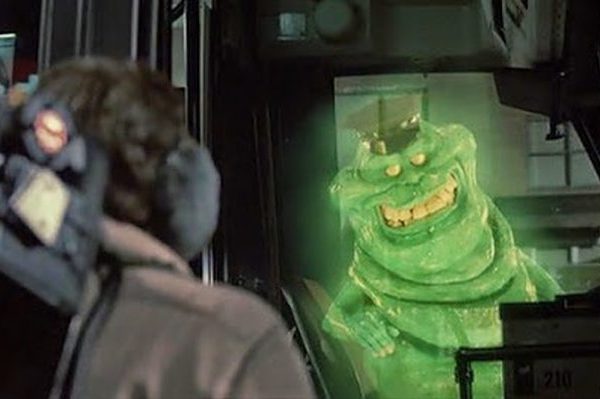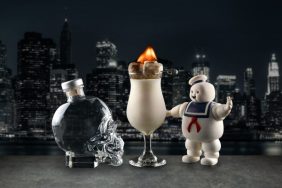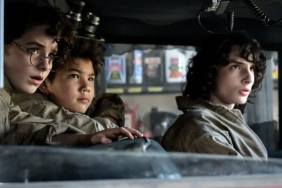“Ugly little spud, isn’t he?” – Dr. Raymond Stantz
John Belushi was originally supposed to play Peter Venkman in Ghostbusters before his tragic death in 1982. In honor of Belushi, screenwriters Harold Ramis and Dan Aykroyd told their FX guy, Steve Johnson, to model Slimer—whose moniker at the time was “Onion Head Ghost”—after their friend. A ghost of pure Ectoplasm (with a gigantic appetite), Slimer is the first spirit ever captured by the Ghostbusters. As Bill Murray’s Venkman puts it, “We came, we saw, we kicked [his] ass!” You wouldn’t necessarily call the Ghostbusters and Slimer’s relationship friendly. However, like all toxic relationships, Slimer’s standing with the Ghostbusters evolved into something resembling that of a pet…maybe even a pet peeve.
A pet peeve is a minor annoyance that an individual identifies as particularly irritating to them, like the feeling of being annoyed when a pet doesn’t do as they’re told. That said, the films spend very little time exploring the wants, needs, and pet peeves of the Ghostbusters’ favorite pet, that’s right, Slimer. For example, how did Slimer feel about the Ghostbusters catching ghosts for a living right in front of him? Sure, some of them have it coming—causing death and destruction across the city. But others, those like Slimer, unable to move on due to an overwhelming appetite, don’t deserve imprisonment. In this edition of Mandatory Movie Speculation, we attempt to better empathize with the “ugly little spud.”
Cover Photo: Columbia Pictures
Be like spud: Complete Your ‘Ghostbusters’ Costume By Making This Life-Like Slime
To be continued: 15 Terrifyingly Good Guesses As to Who Will Replace Stay Puft Marshmallow Man in ‘Ghostbusters: Afterlife’
The proverb “blood is thicker than water” means that the bonds made by choice are more important than the ones bound by the water of the womb or, in Slimer’s case, the Ectoplasm of the afterlife. True to Ramis and Aykroyd’s intention (albeit unintentional), the character of Slimer (a staple of the franchise) exemplifies the everlasting bonds of friendship. So, Slimer couldn’t care less about the (original) Ghostbusters catching ghosts for a living. He supports it because it bodes well to support one’s friends.
Conclusion: Slimer ain’t afraid of no ghost(s).
Visit the Mandatory Shop for great deals on your very own Mandatory merch.
Follow Mandatory on Facebook, Twitter, and Instagram.
Slimer Speculation
-
Love at first slime?

After their showdown at the Sedgewick Hotel (which Slimer haunted, non-violently...he just ate food), recklessly tossing the ghost around like some sort of green hacky sack, the Ghostbusters caught Slimer in a trap and put him in a storage facility but his incarceration doesn’t last long.
-
A class-five full-roaming vapor. A real nasty one, too.
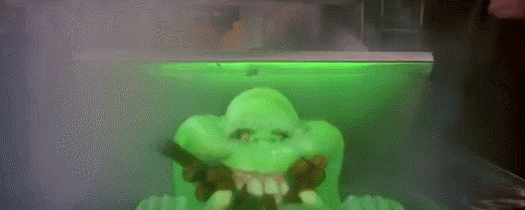
He and many other ghosts are released when the facility is shut down and later seen occupying a hot dog cart in Rockefeller Plaza. After the Ghostbusters defeat Gozer in that first film, Slimer is a free man, or rather Spud. The surprising thing is, in Ghostbusters 2, Slimer is hanging around the Ghostbusters on his own accord, presumably, as a pet.
-
A conflict of interest.
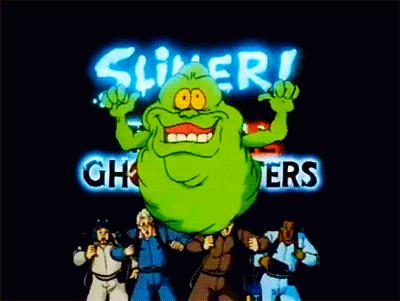
The animated series, The Real Ghostbusters, fills the gaps in-between Ghostbusters and Ghostbusters 2. Following the events of the first film, a lonely Slimer sticks around Ghostbusters headquarters. Before his capture, everyone had either ignored or ran away from Slimer—the Ghostbusters gave him the attention he desperately desired. The Ghostbusters found Slimer annoying at first (eating all their food) but eventually, despite the irony of it all, began to tolerate him. Over the years, Slimer actually helped the Ghostbusters catch other ghosts whenever needed. This put him on bad terms with his kind—as far as other ghosts were concerned, he was a traitor.
-
A friend in need is a friend indeed.
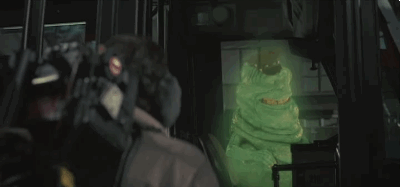
Slimer is much fatter in Ghostbusters 2. Whether or not this was simply for comedic effect or has a deeper meaning is up for debate (stress eating?). Regardless, the bulk of his interactions in that film are with Louis Tully (the ever-punchable Rick Moranis). The two meet when Louis finds Slimer eating his lunch, causing them both to retreat in fear. Later in the film, when Louis “suits up” to help the Ghostbusters, Slimer shows up in an abandoned bus to give Louis a ride, prompting the latter to wonder how Slimer got his license.
-
In the words of Rodney Dangerfield, “No respect.”
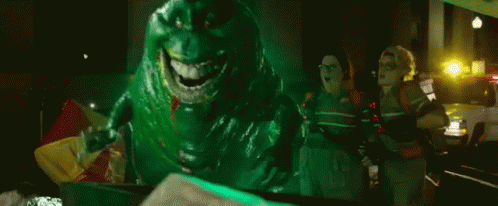
According to Peter Feig, he and his co-writer Katie Dippold created a backstory for Slimer in preparation for 2016’s failed Ghostbusters reboot. Their idea: Slimer was a gangster executed for killing a waiter who messed up his order—which is why he haunted the hotel/restaurant where he met the original Ghostbusters. He began his tenure as a ghost fully-formed until being disfigured by the Ghostbusters’ proton packs (they were to blow off his legs). Thankfully, this depiction, which shits all over the compassionate green couch potato we know and love, never made it into the film.
-
We need to talk about Slimer.

Slimer’s likely backstory is one of dejection. He probably felt lonely and misunderstood, a feeling that carried over into the afterlife when his appearance and uncontrollable discharge were ridiculed by fellow ghosts and feared by human patrons. Enter the Ghostbusters. While they weren’t the nicest bunch, they learned to accept Slimer. Most of the ghosts in the Ghostbusters universe are evil anyway. Therefore, Slimer joins Dragonball Z’s Vegeta, Harry Potter’s Severus Snape, Terminator 2: Judgement Day’s T-800, and the Green Power Ranger, as one of the coolest adversaries to switch sides.
